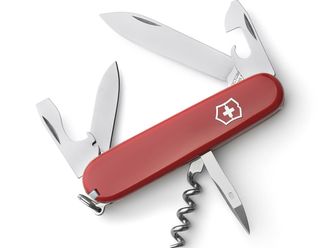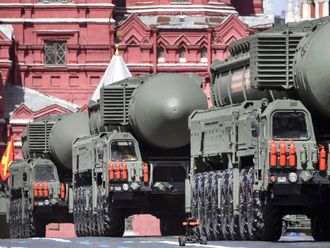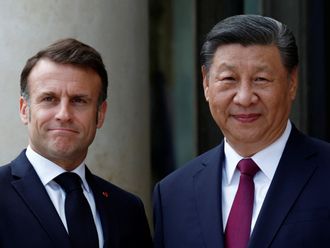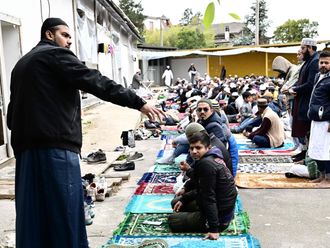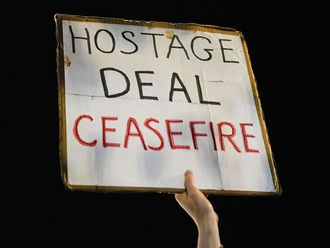
Naples (Italy): Up and down a cramped pedestrian street there are little clay statues of Cristiano Ronaldo, unmistakable in their form: legs spread shoulder-width apart, arms shooting at the ground, hair gelled into a luscious wave.
There are also fat Ronaldos; weirdly skinny Ronaldos; Ronaldos with faces that resemble “The Scream,” by Edvard Munch; and many other Ronaldos that, in general, look very little like the actual Ronaldo.
Together, the diminutive Ronaldos represent an ever-growing segment of the colourful Christmastime panoply on Via San Gregorio Armeno, a historic street that has been known since the 1800s as a spiritual home of artisans specialising in traditional Nativity scenes, or presepi.
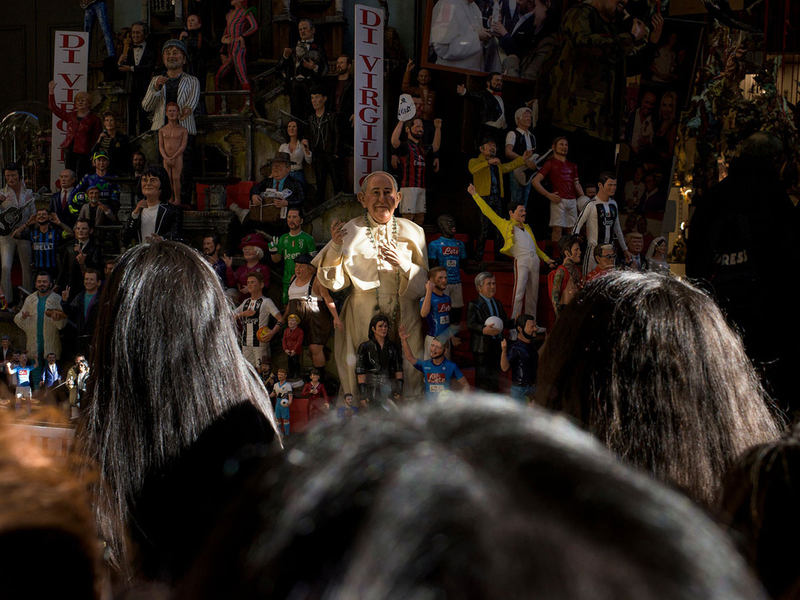
Many consider the traditional figurines from these Neapolitan workshops — intricate models of biblical figures crafted from wood, clay, wire and fine cloth — to be refined works of art. Yet casual visitors to the street these days might be more likely to encounter the clay statuettes of celebrities and pop culture figures that now dominate the storefronts and kerbside tables.
And in a football-crazy city like Naples, it is natural that football players, and the clay representations of them, have begun to receive top billing.
“It’s hard to explain, but it’s like a visceral faith,” Marco Ferrigno, a fourth-generation artisan who owns one of the most famous workshops on the street, said of the city’s football obsession. “So players can become idols — to the extreme, sometimes.”
Alongside all the baby Jesuses and the different Ronaldos, then, holiday shoppers can find handcrafted figurines of Francesco Totti taking a selfie, Kylian Mbappe with his arms folded across his chest, Lionel Messi pointing two hands to the sky and almost every current member of Napoli, the beloved local team.
The statues can make reference to recent games, major accomplishments, trademark gestures or humorous incidents. The transfer market and league standings can dictate stores’ inventory. Artisans can glorify players or antagonise them.
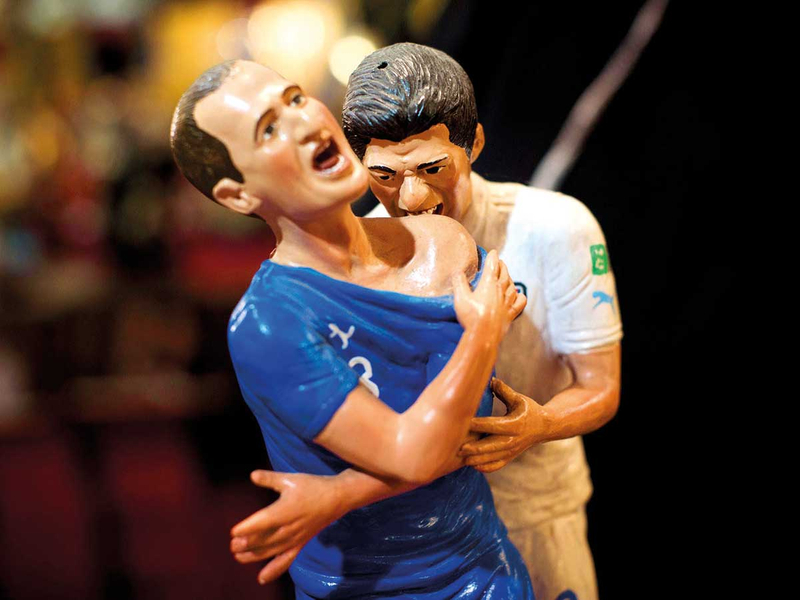
The sidewalk stalls feature enough football players to populate a statuette World Cup, and the street, in turn, has developed a divided identity: part sacred museum, part tourist trap, part art gallery, part miniature Madame Tussauds.
“The market demanded it,” Isabella Esposito, 54, whose family has owned a store on the street since 1950, said of the dense display of football player sculptures in front of her store.
It was not always this way. Nativity scenes became prominent in Naples in the late 1700s as an art form besides painting that the city’s nobility could patronise. Over the next century, the city’s presepi took on a distinct style: dense, ornate and full of life, situating religious figures like the Virgin Mary and baby Jesus on Neapolitan streetscapes alongside other generically pastoral characters, like pizza-makers.
I’m a Napoli fan, and an anti-Juventus fan, but in business we have to make amends.
According to Marino Niola, an anthropologist at the Suor Orsola Benincasa University of Naples who wrote a book in 2005 called “Il Presepe,” the Nativity scene tradition experienced a dip in popularity after the Second World War. Niola said it was no coincidence then that the Nativity scene — which he called “a ritualistic toy to play a metaphysical game” — started making a comeback in the mid-1990s, once artisans on Via San Gregorio Armeno began introducing pop culture figures to their inventory of statuettes.
In the beginning, of course, there was Diego Maradona.
In 1987, the Argentine superstar led Napoli to its first Italian league title — an event locals jokingly compare these days to the eruption of Mount Vesuvius. A couple of years later, Maradona became the first football player to appear in the city’s Nativity scene shops. (A national political scandal in 1992 known as Mani Pulitewas another early muse for the city’s Nativity scene artisans.)
Even today, Maradona is nobly featured in nearly every presepe shop on the street, always with flowing hair, always with short shorts.
“He was an idol, and becoming a figure in the Nativity scene was a form of sanctification,” Niola said of Maradona.
Not everyone has enjoyed the developments in the industry. Vincenzo Nicolella, artistic director of the Neapolitan Association of the Presepe, said he was concerned that the universe of acceptable Nativity scene characters was expanding too rapidly.
Since the 1990s, traditional shops have prominently featured figurines of politicians, actors, singers and even, more recently, Instagram influencers alongside the football stars. Traditional Nativity scene figures, meanwhile, are often relegated indoors and out of plain sight. Nicolella grew particularly agitated last year when he noticed “Star Wars” characters sold in the shops.
“An intervention is necessary to say, ‘Hold on, please keep your hands off the presepe,’” he said. “We cannot forget that we are speaking of a high-quality artistic tradition.”
Many artisans and merchants, though, have accepted that they have to straddle the sacred and secular worlds. They say the football players and celebrities invite younger generations to learn about a craft that can otherwise feel old-fashioned.
Sitting at a squat wooden desk passed down to him from his grandfather, Genny Di Virgilio proudly showed off the delicate handmade pieces inside his family workshop, which his great-grandfather opened in 1930. Like many of the other shops, the Di Virgilio workshop stocks little red horn amulets, which look a bit like chili peppers and are meant to ward off bad luck (“We have a saying in Naples: ‘It’s not true, but I believe it’”) and figurines that cleverly piggyback on international politics. (“We sold a lot of statues of Trump last year,” he said. “Mamma Mia.”)
Di Virgilio said that the traditional religious figurines, some of which can cost thousands of euros apiece, represented most of his business, but that the football figurines, which are around €20 (Dh83.69 or $22.93) apiece, garnered the most attention from passers-by.
There is a clay statue of Zinedine Zidane headbutting Marco Materazzi at the 2006 World Cup and, nearby, a photograph of Materazzi holding it, a big smile on his face. In fact, the entire store (like Ferrigno’s) is covered with photographs of football players holding their own likenesses in Nativity scene statuette form. Di Virgilio coolly rattled off the names of players he had met — Edinson Cavani, Marek Hamsik, Lorenzo Insigne, Dries Mertens, Mauro Icardi, Mario Balotelli — before trailing off.
“They become children again when they see the sculptures,” Di Virgilio said.
Di Virgilio said Ronaldo became his top seller this year after joining Juventus from Real Madrid, and he has been happy to feature the striker prominently in the store.
“I’m a Napoli fan, and an anti-Juventus fan, but in business we have to make amends,” he said.
Such generosity is not extended to all players, apparently. Di Virgilio currently sells a statue of Gonzalo Higuain, a former Napoli player, with devil horns and a sign that reads, “ungrateful heart,” in Neapolitan slang. Higuain was seen to have betrayed the city when he decamped for Juventus two years ago.
At another store up the street, Higuain is depicted holding a platter with three babas — a vaguely mushroom-shaped, traditional Neapolitan pastry — symbolising the three goals Napoli scored against his current team, AC Milan, earlier this season.
Di Virgilio cringed at the idea that people might place one of his football player figurines inside a traditional Nativity scene. But many do. Anyway, he said, customers in the last couple of years have been coming into his store and requesting a new sort of product: clay figurines of themselves.
Could a celebrity-obsessed generation give way to a cohort of narcissists?
“I have 30 of them to make before December 24,” he said, shrugging.


